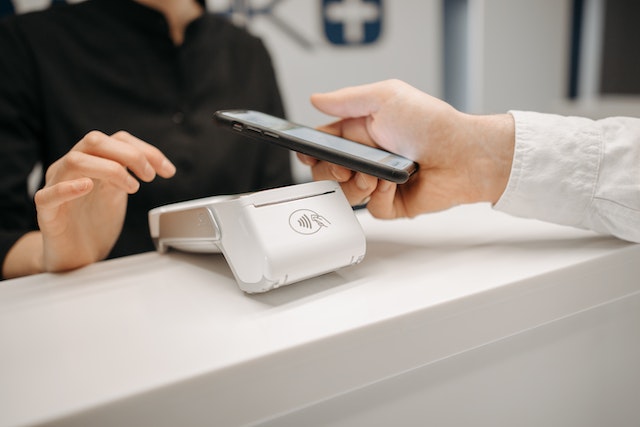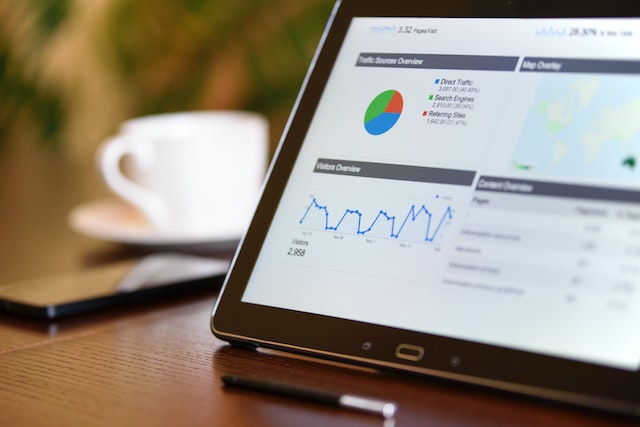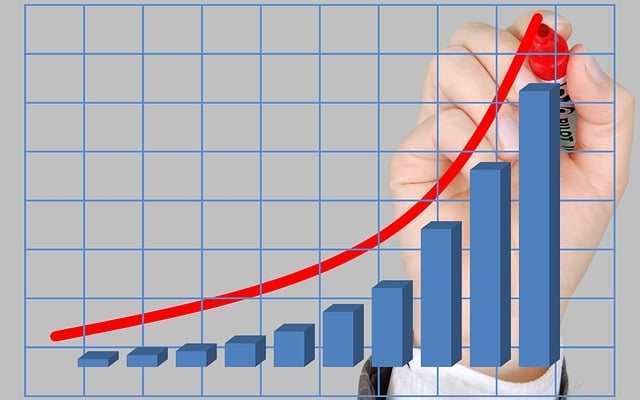
Billing Brilliance: Unlocking Success Through Streamlined Processes
Table of Contents
In today’s fast-paced business landscape, every second counts.
Companies across industries are constantly searching for ways to optimize their operations and maximize efficiency.
One area that often gets overlooked but can have a significant impact on the bottom line is the billing process.
By implementing streamlined billing practices, businesses can unlock a new level of success and propel themselves ahead of the competition.
Centralizing Billing Data

One of the first steps towards billing brilliance is centralizing your billing data. Many businesses often struggle with fragmented data sources, leading to inefficiencies, delays, and errors. By consolidating all relevant information into a single system or platform, you can eliminate these issues. Centralizing billing data enables faster access to billing information, simplifies tracking, and facilitates accurate reporting.
Having all the necessary data in one place allows your team to easily retrieve invoices, payment records, and customer information, eliminating the need to search through multiple systems or folders. This saves valuable time and ensures that the billing process moves swiftly. Furthermore, centralization enhances data accuracy and consistency.
With a centralized system, you can establish standardized billing templates, pricing structures, and payment methods and terms. This consistency reduces the chances of errors and discrepancies, providing a seamless experience for both your team and customers.
Automating Invoice Generation

Manual invoice generation is a time-consuming task that can be prone to errors. By leveraging automation tools, you can streamline the process and significantly reduce the risk of mistakes. Automated invoice generation ensures consistency, improves turnaround time, and enables customization based on customer preferences. Automation eliminates the need for manual data entry and reduces the likelihood of human errors.
It also allows you to set up templates and predefined rules, ensuring that every invoice follows the same format and includes the necessary details. Automation tools can integrate with your billing system, automatically generating invoices based on predefined criteria such as project completion, subscription renewal, or service delivery. This not only saves time but also ensures that invoices are generated promptly, improving cash flow and reducing the risk of delays.
Implementing Online Payment Options

In today’s digital age, offering online payment options is no longer a luxury but a necessity. By providing secure and convenient ways for customers to pay their bills online, you enhance their experience and accelerate the payment cycle. Online payments also reduce the need for manual processing, lower the risk of payment delays, and improve overall efficiency. This convenience speeds up the payment process, reducing the average payment turnaround time.
Online payments also provide a secure and traceable transaction trail. Advanced encryption and security protocols ensure that customer payment information remains confidential and protected. By offering multiple online payment gateways and methods such as credit cards, debit cards, and digital wallets, you accommodate a wide range of customer preferences and increase the likelihood of prompt payments.
Utilizing PDF Management Tools
PDF documents play a crucial role in business operations. To streamline your billing processes, consider utilizing PDF management tools such as pdf-tools.com. These tools offer a range of features to enhance your PDF workflows. From creating professional invoices and converting documents to PDF format to merging, splitting, and compressing PDF files, these tools provide efficient solutions.
By effectively managing your financial PDFs, you can ensure that your billing documents are accurately formatted, securely shared, and easily accessible.
Embracing Electronic Invoicing

Electronic invoicing enables faster delivery, and easier tracking, and reduces the likelihood of lost invoices. Electronic invoices, sent via email or through a secure online portal, eliminate the costs and delays associated with printing, postage, and manual distribution. They reach customers instantly, reducing delivery time and expediting the payment cycle.
Electronic invoices also offer the advantage of easy tracking. You can receive real-time notifications when an invoice is delivered, opened, or paid, allowing you to stay informed about the status of your invoices. Traditional paper invoices can get lost in the mail or buried under piles of paperwork. Electronic invoices, on the other hand, are stored digitally, making them easily searchable and accessible whenever needed.
Integrating Billing with CRM Systems
For businesses that rely on customer relationship management (CRM) systems, integrating billing functionality can have a transformative impact. By synchronizing billing data with your CRM, you gain a comprehensive view of customer interactions, preferences, and payment history. This integration improves customer service, enables targeted marketing efforts, and enhances overall customer relationship management.
By combining billing data with your CRM system, you can create a centralized customer database that houses all relevant information. This enables your team to have a complete view of each customer’s profile, including their contact details, transaction history, outstanding invoices, and payment preferences. Armed with this information, your team can provide personalized and tailored customer service, addressing specific needs and concerns.
Proactive Payment Reminders
Late payments can disrupt cash flow and strain relationships with customers. Automated reminders sent via email or SMS can help customers stay on top of their payment obligations and foster a proactive approach to billing. Proactive payment reminders serve as gentle prompts to customers, reminding them of upcoming or overdue payments.
By automating these reminders, you can ensure that they are sent consistently and at the right time. Automated reminders can be tailored to each customer’s preferences, such as the frequency and timing of reminders.
Robust Analytics and Reporting

To optimize your billing processes, you need insights into key metrics and trends. Robust analytics and reporting capabilities allow you to monitor billing performance, identify bottlenecks, and make data-driven decisions. You can track metrics such as average payment turnaround time, invoice accuracy rate, and outstanding balances. These metrics help you identify areas of improvement and make data-driven decisions to optimize your billing processes.
Analytics also enables you to monitor trends over time. You can identify patterns in customer behavior, seasonal variations in payment cycles, or changes in invoice volumes. This allows you to proactively adapt your processes and resources to accommodate fluctuations and ensure smooth operations. Furthermore, robust analytics and reporting help you communicate and share insights with stakeholders.
You can generate detailed reports, visualizations, and dashboards that provide a clear overview of your billing performance. These reports facilitate transparency, foster accountability, and support effective communication across departments and with key decision-makers.
Ensuring Compliance and Security
Billing processes involve sensitive customer information, making compliance and processing security paramount. Implementing robust data protection measures, such as encryption and access controls, ensures the confidentiality and integrity of customer data. Compliance with applicable regulations, such as GDPR or PCI-DSS, builds trust and safeguards your business reputation.
Embracing Continuous Improvement

Achieving billing brilliance is not a one-time effort but an ongoing journey. By embracing a culture of continuous improvement, you can adapt to evolving customer needs, market trends, and technological advancements. Regularly evaluating your billing processes, seeking feedback from stakeholders, and implementing innovative solutions will help you stay ahead of the curve.
Continuous improvement is the key to staying competitive and responsive in a dynamic business environment. It involves a mindset of seeking ways to enhance your billing processes, even when they are already effective. Encourage your team to identify areas for improvement, whether it’s through process automation, exploring new technologies, or soliciting customer feedback.
Summary
Achieving billing brilliance is essential for business success. Efficient billing processes play a pivotal role in fostering trust, strengthening customer relationships, and maintaining a healthy cash flow. By centralizing billing data, automating invoice generation, offering online payment options, and embracing electronic invoicing, you can streamline the entire billing cycle, saving time, reducing errors, and enhancing the customer experience.
Author Profile
- Online Media & PR Strategist
- Blogger and Educator by Passion | Contributor to many Business Blogs in the United Kingdom | Fascinated to Write Blogs in News & Education I have completed a journalism summer course at the London School of Journalism and manage various blogs.
Latest entries
 BusinessMay 3, 20244 Business-Boosting Benefits of Conversational AI
BusinessMay 3, 20244 Business-Boosting Benefits of Conversational AI CareerMay 2, 2024Employee Performance: How to Enhance Employee Effectiveness and Efficiency
CareerMay 2, 2024Employee Performance: How to Enhance Employee Effectiveness and Efficiency FinanceApril 18, 2024Exploring Cryptocurrency and Bitcoin as Payment Options in Business
FinanceApril 18, 2024Exploring Cryptocurrency and Bitcoin as Payment Options in Business BusinessApril 16, 20245 Essentials for Your Online Business in the UK
BusinessApril 16, 20245 Essentials for Your Online Business in the UK

